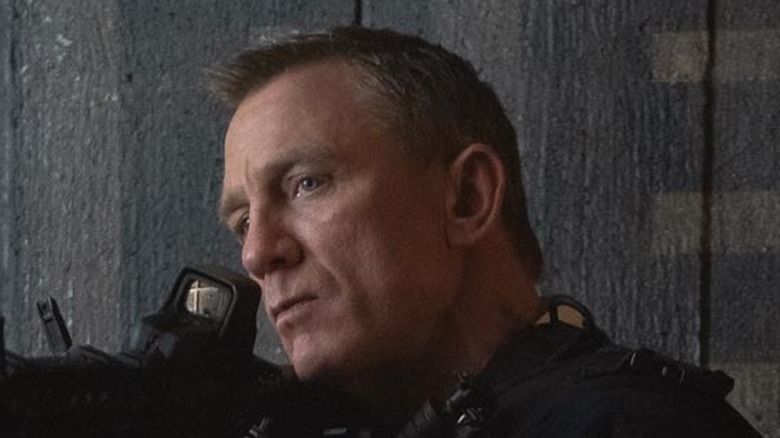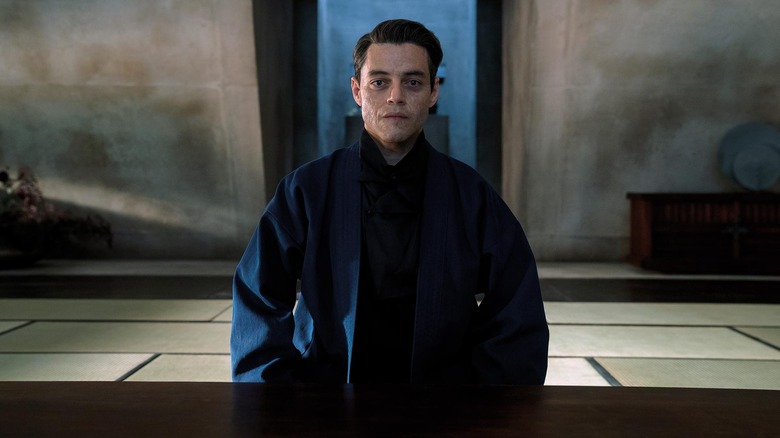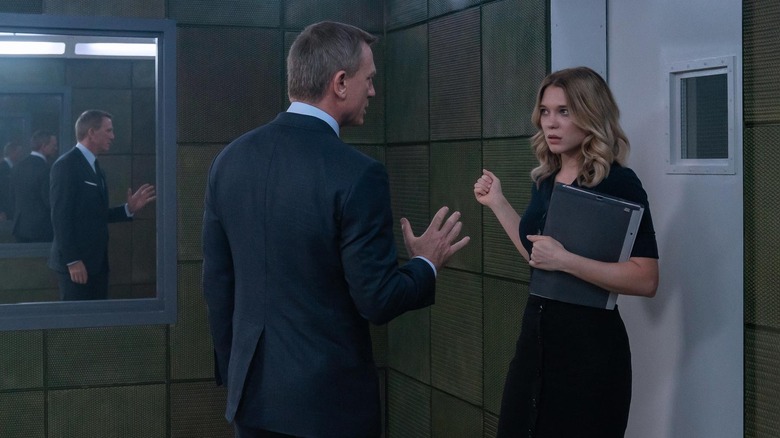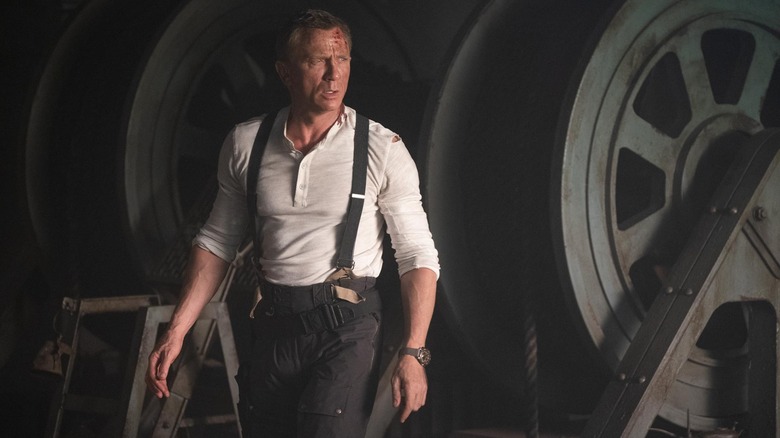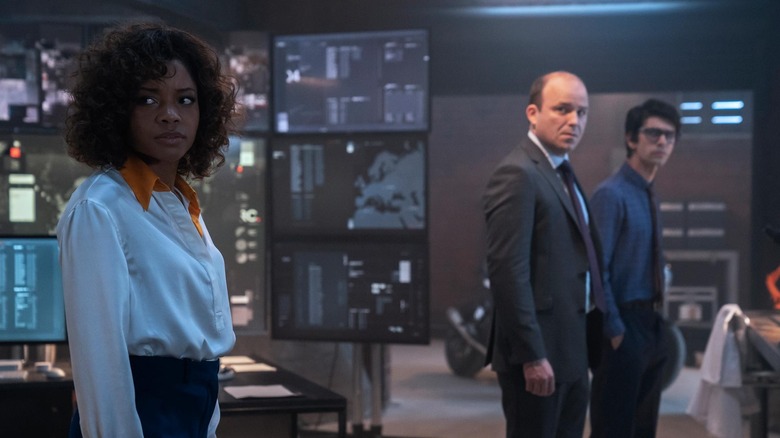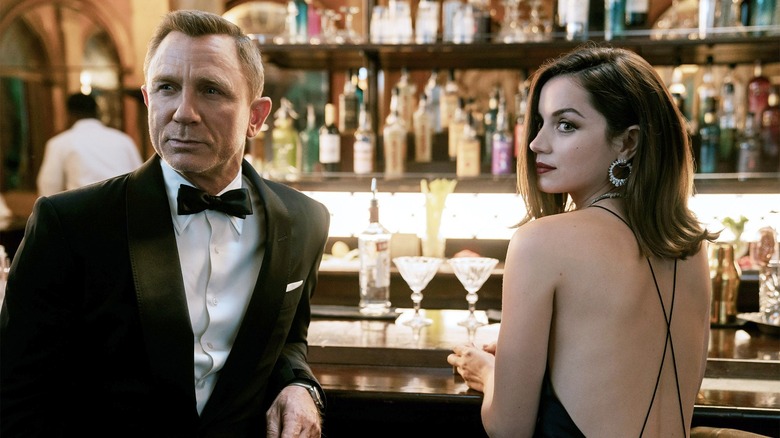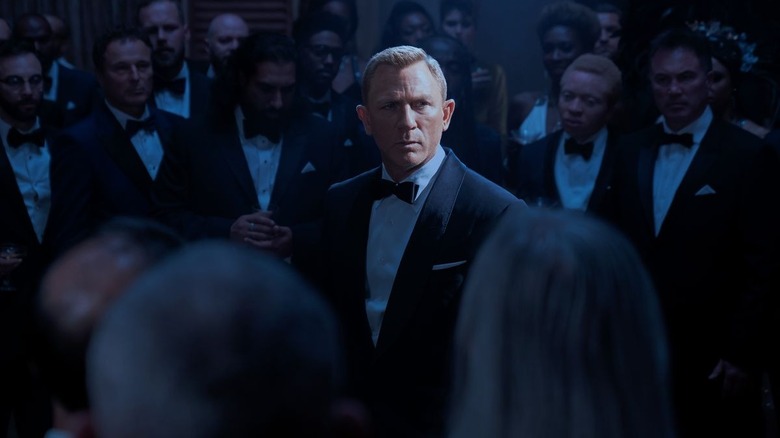No Time To Die Ending Explained
Spoiler warning: This article contains major plot details for "No Time to Die."
"No Time to Die" is all about endings, bringing Daniel Craig's critically and commercially successful run as James Bond to a close. It is a sprawling epic, with a long runtime, that does its level best to strike a balance between the moody drama that has typified Craig's run as the character with the action and spectacle that has made the Bond franchise such an enduring brand in the pop cultural landscape. But when all is said and done, it is also a tragedy.
The film is principally concerned with catching up with Bond five years after the end of "Spectre," as he comes out of retirement to help the CIA retrieve a missing scientist and the controversial bioweapon he has created. The mission sets him on a collision course with his former colleagues at MI6, his imprisoned nemesis, and new threat Lyutsifer Safin (Rami Malek), the man whose grand scheme threatens the entire world.
On paper, "No Time to Die" isn't all that different from the 24 canonical Bond films that precede it. But in its execution, and in the boldness of its conclusion, it breaks new ground heretofore unexplored within the franchise.
The master plan
Every Bond movie has an extravagant villain with an even more elaborate plan for some kind of world domination. "No Time to Die" has the aforementioned Safin, a megalomaniac with a grudge and a peculiar worldview who thinks of himself as of a kind with Bond. Earlier in the film, Bond traces Obruchev (David Dencik), the Russian scientist he's chasing, to a SPECTRE meeting in Cuba. There, he discovers that Blofeld (Christoph Waltz) is still running the shady organization from behind bars through the use of his bionic eye. Blofeld attempts to use the bioweapon they have acquired from Obruchev — a genetically targeted virus made of nanobots called Project Heracles — to kill Bond, but Obruchev, at the behest of Safin, his true boss, reverses the programming of the weapon to kill every member of SPECTRE in attendance instead.
Safin saves Bond's life as he once did for Madeleine Swann, Bond's erstwhile and estranged lover. When Madeleine was a young girl, Safin sought revenge against her father, Mr. White, for killing his family. He murdered Madeleine's mother but chose to spare her life, a mercy he uses for leverage later in the film to make her a pawn in his successful plot to kill Blofeld and end SPECTRE forever.
Madeleine, who Bond has been suspicious of since the film's opening, when her suggestion he visit Vesper Lynd's grave led him into a trap, beats the betrayal accusations as Bond realizes the trap was entirely Blofeld's plan to drive them apart. Seeing that she has been used by outside forces, Bond runs to Norway to find Madeleine, and finds a big surprise awaiting him.
Meet Lil Bond
Five years pass in "No Time to Die" from the film's harrowing opening breakup between Bond and Madeleine to the main thrust of the story. But when Bond reunites with Madeleine and apologizes for the time they've lost while apart over his inability to trust the women he loves, he discovers she has a daughter, Mathilde. Though Madeleine initially insists he is not the father, it is very clear she is not telling the truth.
After he meets Mathilde, Madeleine fills Bond in on her past with Safin, how he saved her life and has a strange obsession with her, and how his parents used to be the chief poison makers for SPECTRE. Bond, with help from Q (Ben Whishaw), is able to track Safin to his base on an island in murky international waters between Russia and Japan, where he is manufacturing Project Heracles on a grand enough scale to deploy it globally.
But before Bond can embark on his mission to kill Safin and stop Project Heracles from spreading further, Safin and his men come and kidnap Madeleine and Mathilde. Bond must infiltrate Safin's island with the help of new 007 Nomi (Lashana Lynch), while trying to avoid sparking an international incident and causing even more trouble for MI6, the agency that helped develop this deadly weapon in the first place.
Death of a Bachelor
Bond and Nomi storm Safin's base, neutralizing Obruchev and mowing their way through various henchmen with bullets and fisticuffs befitting a Bond movie climax. He's able to reunite with Madeleine and Mathilde, who he now knows for certain is his daughter, and has Nomi get them off the island to safety so he can get to the center of the base and disable the blast door shielding that protects Safin's operation from outside harm.
M (Ralph Fiennes) is prepared to authorize a surgical strike of missiles to destroy Safin's island and prevent Project Heracles from being deployed, but they can't do so until Bond destroys the defense system. It's a suitably harrowing, nail-biting sequence, complete with a ticking clock of inbound missiles and Bond needing to get clear before they land.
But in his final altercation with Safin, Bond is exposed to a version of the bioweapon that's genetically locked to Madeleine's DNA. The nature of the nanobots is such that they cannot be removed from one's person, but they are inert and harmless unless they've been programmed to react to specific genetic markers. In killing Safin, Bond dooms himself, because if he makes it off this island and comes into contact with Madeleine or his daughter, he will infect and kill them both.
Resigned to his fate, Bond lowers the island's defenses and says his final goodbyes over comms to the love of his life and the daughter he never got to know. He accepts the end of his life knowing the two people he cares about the most will be safe from the violent and terrifying life that has haunted Madeleine since she was a child, and knowing his daughter will be free of it as well.
The missiles fall ... and so does James Bond.
James Bond is dead. Long live James Bond
Later, back at MI-6 headquarters. M eulogizes Bond by sharing a drink with Nomi, Q, Tanner (Rory Kinnear), and Moneypenny (Naomie Harris). Over the course of the last few films, each of these former colleagues has developed their own meaningful rapport with Bond, and the knowledge that he died saving the world, cut off from a daughter he didn't even know he had, weighs heavily on the entire group. But with the mournful clink of a glass poured in Bond's honor, his long tenure on her majesty's secret service is finally at an end.
Elsewhere, Madeleine drives off into the sunset with Mathilde in the passenger seat beside her, still struggling with this profound loss. But looking at her daughter, who she remarks has James' eyes, she promises Mathilde to tell her a story. A story about a man named Bond ... James Bond.
Where to now?
So what happens now? James Bond has never died in a movie before, despite 24 previous films full of near-death experiences. Because of the franchise's murky continuity and tenuous tethers between different actors' respective eras with the character, none of the other Bonds' final outings were creatively conceived that way. But with Craig agreeing to come back for one last film after "Spectre" was scripted to be an open ending for the character in case it was his last, the filmmakers were free to tell a story with more finality than most enduring figures of IP ever receive (Christopher Nolan's Batman notwithstanding.)
But unlike "The Dark Knight Rises," which ends with a charming moment letting us all know Bruce survived, somehow, and gets to have a happily ever after, anyone staying through the credits of "No Time to Die" hoping for a similar reversal of fortune will be sorely disappointed. Bond is dead.
Well, this Bond is, anyway.
007 forever
The last message in the credits echoes what so many other Bond movies before it has said: "James Bond will return..."
Not 007. James Bond. That basically proves we'll be getting another modern reboot of the character, the same kind director Martin Campbell delivered twice with "Goldeneye" and "Casino Royale." We have no idea who is going to play Bond, or who will direct, or how Amazon and MGM's new relationship will affect the future of the franchise. But while this particular continuity will no doubt be jettisoned, with none of these interpretations of the characters holding over (save for maybe Ralph Fiennes' M? It worked with Judi Dench!), Fukunaga and Waller-Bridge adjusted enough of the film's style and tone to leave whoever takes over in a stronger position.
Leading up to "No Time to Die," numerous additions to the Bond franchise have brought with them think pieces about whether or not Bond can still work onscreen — if he can remain relevant even as the roots of the franchise and its inherent misogyny feel more and more archaic. It's an anachronism that isn't just baked into the character, but in the idea of telling modern stories about "superspies."
This movie proves you don't have to drastically change Bond as a person — instead, you need to change the world around him and create drama out of that juxtaposition, and make consequences for the decisions he makes as a character to actually affect him. Whether the next take on Bond is a drastic departure or a careful refinement on what has come before, this bold and haunting conclusion for "No Time to Die" has set the stage for Bond to endure.
